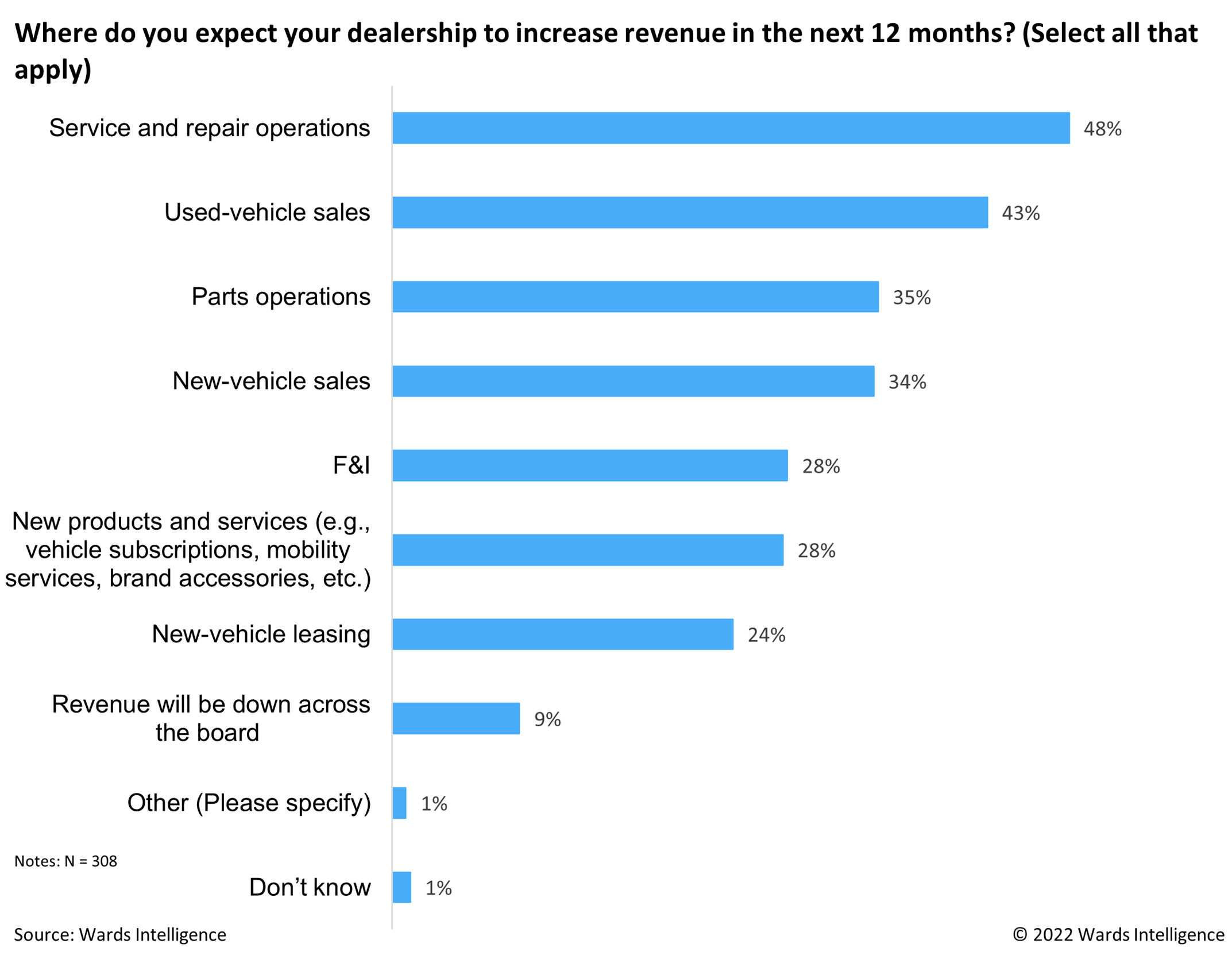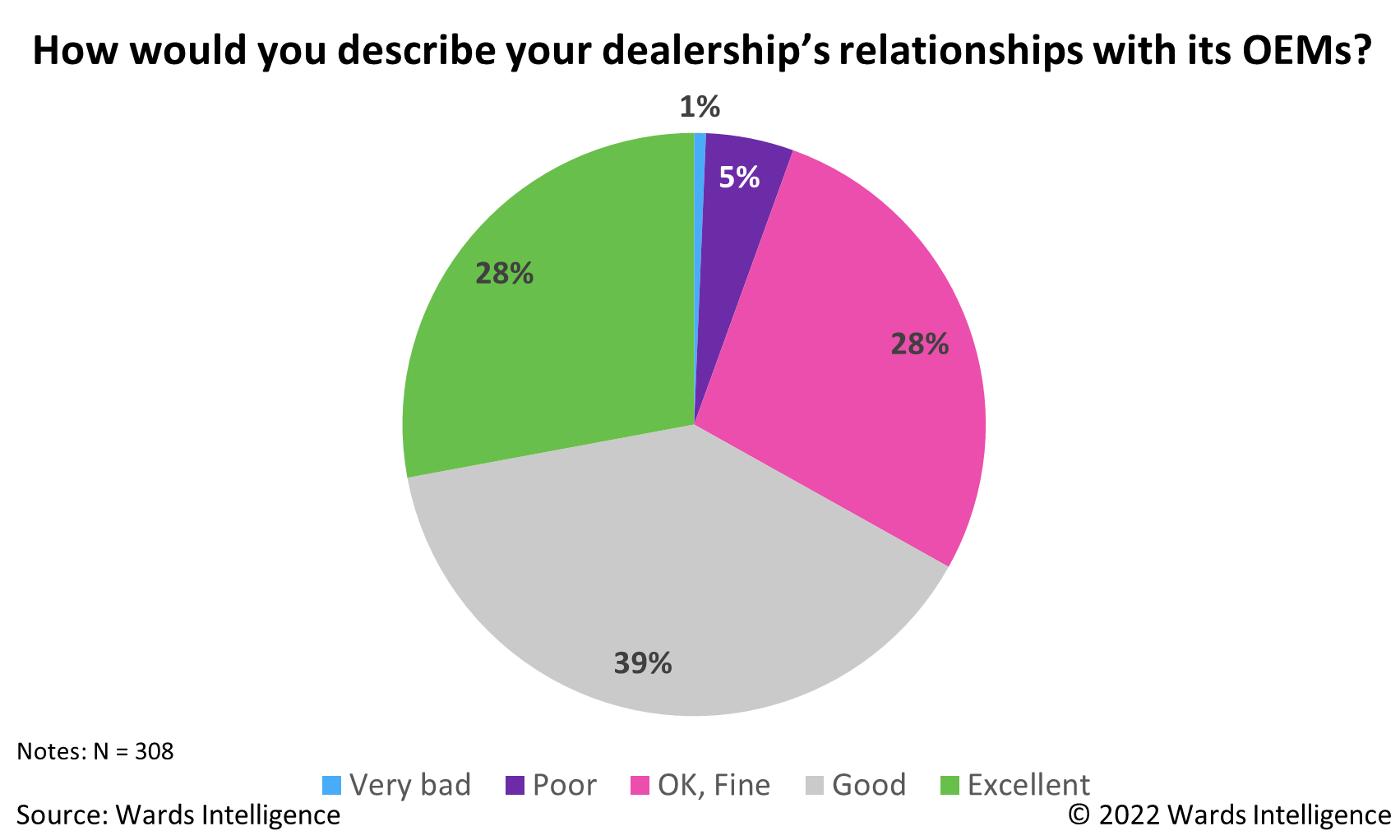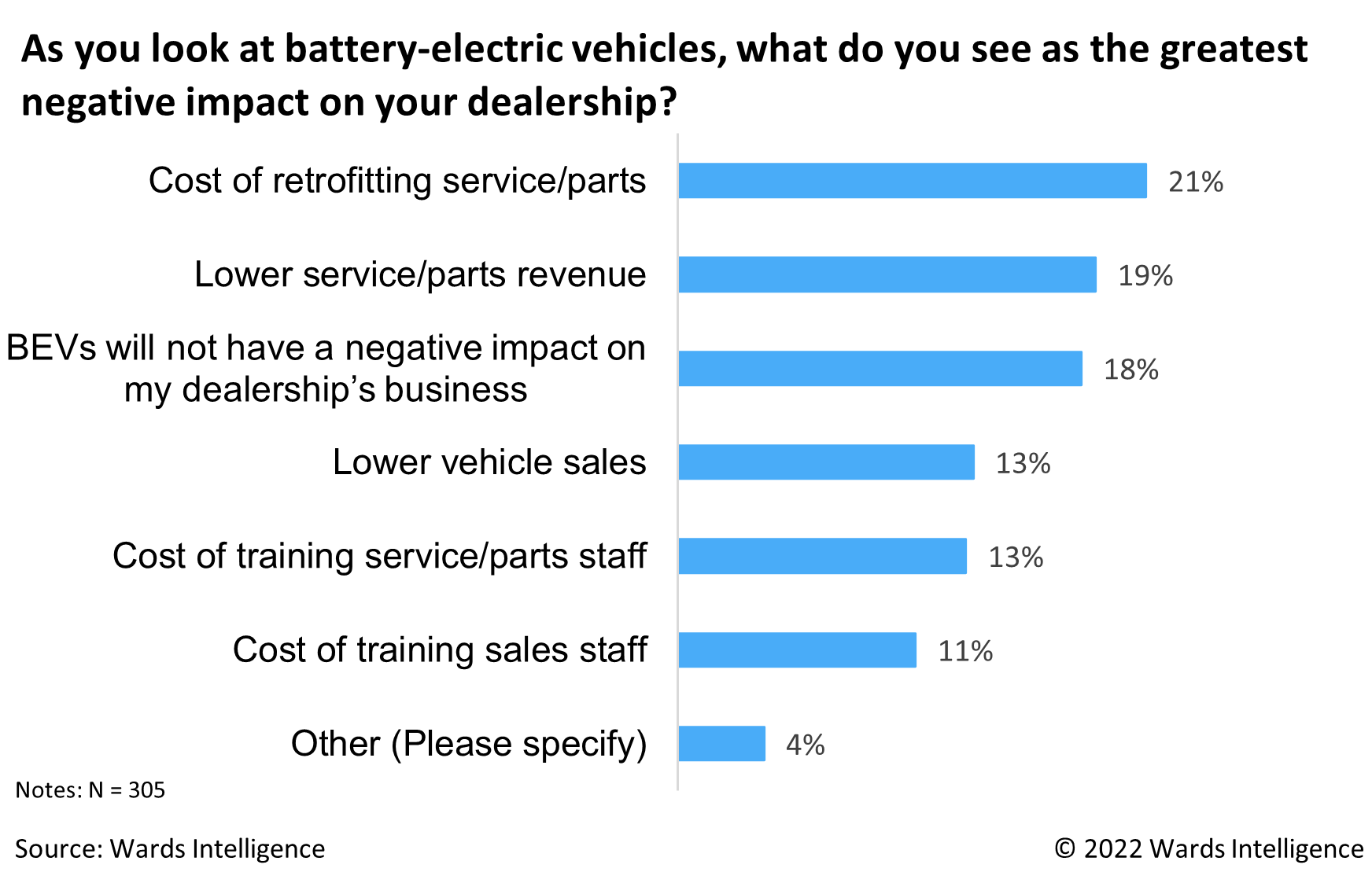Wards Intelligence surveyed dealers throughout the U.S. to chart retail automotive's present health, electrification challenges and future opportunities. This is part of a series analyzing our survey results.
“There are more tears shed over answered prayers than over unanswered prayers.”
That well-known quote may sum up the situation many car dealers currently face. Our January report noted the most prevalent 2023 wish by dealers was more inventory. Well, that wish was granted – and then some – for many dealers who report their lots now are flooded with inventory.
But that’s not true throughout the retail landscape. In general, the availability of most models across vehicle segments remains below historical levels. Although U.S. new-vehicle inventory finished April at nearly 55% above April 2022, the overall 35 days’ supply pales compared with pre-pandemic norms of 65 days or more.
Light-duty trucks are one exception to the lower-than-usual inventory. During the chip shortage, automakers tended to focus on producing high-margin models, such as pickups, so less pent-up demand existed for the trucks once the chip crisis began to ease. Now, Ford is offering significant incentives to keep trucks moving off lots. General Motors, which idled some Silverado/Sierra plants for two weeks to keep inventories in check, is expected to do the same, Karl Brauer, executive analyst with iSeeCars, tells Wards.
Yet dealers need vehicles priced below $25,000-$30,000. It’s unclear if automakers will fill that void. GM’s reintroduction of the budget-friendly Trax, which has a sticker price of $20,400, may start a trend for automakers looking to attract those who want vehicles under $25,000, but it’s too soon to forecast, Brauer says.
Industry insiders have long predicted that the demand for vehicles of the past few years would end once chip availability rebounded, production increased and pricing weakened. That is now coming to fruition, with control of the market shifting more toward buyers and away from sellers.
Of course, rollercoaster production that has recently led to an array of shortages and quickly turned to overabundance is just one headache dealers now face. As Silicon Valley Bank and other financial institutions struggle to remain afloat in some form, the economic index sinks and the stock and bond markets experience turmoil. Those factors leave dealers facing higher costs – from payroll to supplies and utilities – and lower sales volumes.
The Wards Intelligence survey of more than 300 U.S. owners/operators, general managers, chief financial officers and sales and service staff from dealerships of various sizes provides some insights into the state of the industry. The cross-section of respondents from both new- and used-vehicle dealers ranges from small (monthly sales of 80 units and below) to large (monthly sales of 81 or more units).
So, with these new economic factors in mind, how will dealers increase revenue in the next 12 months?

Dealer respondents projected that fixed ops would be an area of growth for them during 2023, and so far they seem to be correct.
AutoNation reports parts and service revenue increased 7.6% in the first quarter vs. a year ago, to $1.1 billion on a same-store basis. Lithia Motors’ Q1 revenue for service, body and parts was $669.9 million, up 9.4% vs. a year ago, also on a same-store basis.
The same growth can’t be said for used-car prices, which were riding high during the chip shortage that hampered new-vehicle production but have fallen ever since. March 2023 prices fell almost 5% from September and nearly 9% from March 2022, according to iSeeCars.
The Cox Automotive Group reports March 2023 used-vehicle sales through dealerships (not private-party transactions) came in at an estimated 1.8 million in March, down 3.5% from March 2022. The statistics may be skewed due to a rise in cash sales, Cox reports, a trend that has taken hold due to rising interest rates.

Perhaps it’s not surprising that most survey respondents (86%) say streamlined F&I processes and improved relationships with lenders (cited by 81%) are the factors most critical to their dealerships’ future successes. Dealers and other retailers know the recent pandemic changed shoppers’ expectations about service.
As we reported earlier, data from the 2022 Cox Automotive Buying Journey Study shows the majority (61%) of vehicle buyers were “satisfied” with their car buying processes, but that’s down five percentage points from the previous year.
High satisfaction with pre-ordering, including solid communication among dealers and customers, may explain why satisfaction rates remained high as the pandemic lingered, Cox reports.
The challenge is for dealers to embrace continued enthusiasm for pre-ordering and grow their online offerings, including F&I. That could further boost dealers’ profits. Cox reports buyers purchased more F&I products in 2022 (67%) than in 2021 (59%).
Dealers may have some breathing room with bringing F&I online as only 30% of car buyers applied for credit online and 15% signed paperwork online in 2022, according to Cox.
Lenders seem to be rising to the challenge of working more closely with dealers. Equifax is one such company offering lending based on “alternative credit data” that gives a holistic view of customers’ financial pictures. Analysts expect to see such partnerships grow as vehicle prices continue to rise.
Another interesting finding from the Wards Intelligence survey responses is that most retailers (82%) believe improved relationships with their OEMs are critical. Historically, automakers and dealers generally have had a less-than-harmonious relationship from time to time. That heightened as manufacturers over-built vehicles and pushed dealers to take them, many of which sat on lots for weeks.
Despite 42% of dealers citing improved relations with OEMs as important to their futures, most appear satisfied with how their OEMs treat them, with only 6% saying their relationships are poor or worse.
Dealers indicate they need continually improved relationships and strong partnerships with manufacturers and stronger brand loyalty to continue retail success.

But manufacturers’ fast-track plans to sell, and service electric vehicles currently is a pain point for dealers.

Most survey respondents (81%) report electric-vehicle adoption will negatively impact their businesses in some way. The top reasons include the cost of retrofitting their service departments and stocking necessary parts (21%), the potential drop in service/parts revenue (19%) and lower vehicle sales (13%). Only 18% of respondents do not expect BEVs to impact some part of their operation negatively.
If findings in a recent J.D. Power study are accurate, the manufacturer-dealer divide may grow further as the BEV activity heightens.
The J.D. Power study shows pricing and accessibility of public charging and ambiguous tax credits play a significant role in buyers’ decisions not to purchase BEVs.

Adding to that is a dip in BEV sales, down from 8.5% in February 2023 to 7.3% in March 2023.
The decline is a concern because J.D. Power data shows an increase in consumers who are “very unlikely” to consider an EV for their subsequent purchases. That number has grown steadily in the first three months of this year to 21% in March 2023.
Chairman Geoffrey Pohanka sought to smooth relations between dealers and manufacturers in his inaugural address at the National Automobile Dealers Assn.’s 2023 show in Dallas.
“Dealers and their OEMs essentially want the same things: to give customers a great buying experience and to sell a lot of cars and trucks,” he told attendees at the January show.
Whether dealers or automakers can truly define that “great buying experience” and deliver it cost-effectively is the question.





